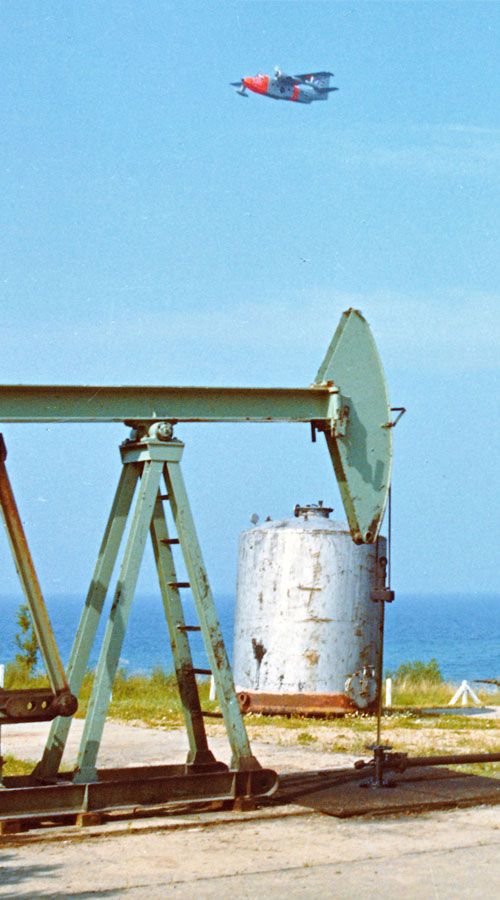The future needs roots
Wintershall Dea’s history is full of exciting turning points.
A journey from the end of the 19th century to today.
The roots of Wintershall Dea date more than 125 years back.


Between 1956 and 1991, Wintershall and DEA produced crude oil together at the Schwedeneck production site on the Bay of Kiel. (Photo: around 1970).
Our history in pictures
Wintershall Dea's roots go back more than 125 years: the predecessor companies Wintershall and DEA Deutsche Erdoel AG were among the pioneers of the gas and oil industry in Germany. Both companies repeatedly set trends with their technical knowledge and expertise, while at the same time consistently developing their portfolios. From the second half of the 20th century, they also became increasingly involved internationally and secured ambitious licences worldwide. Since the merger in 2019, they have continued on this path together. The successful tradition of its predecessors is the foundation on which Wintershall Dea operates today.
Deep dive into our company history
On the following pages, we have compiled various aspects of our company history, the initial results of current research projects for you to read up on, as well as contact and research options.
Moving pictures, moving history of Wintershall and DEA
The Wintershall Dea Corporate Archive also contains some treasures with moving images from our company history. Here we provide insights into some of our historical film recordings.
Video: 125 years of Wintershall
In 2019 Wintershall and DEA have become Wintershall Dea, Europe's leading independent natural gas and crude oil company - two companies rich in tradition, two eventful company histories. See for yourself - in our video on occasion of the merger in 2019.
Video: 125 years of Wintershall
In 2019 Wintershall and DEA have become Wintershall Dea, Europe's leading independent natural gas and crude oil company - two companies rich in tradition, two eventful company histories. See for yourself - in our video on occasion of the merger in 2019.
Video: 120 years of DEA
This video about the history of DEA tells the story of how a small drilling contractor became a global gas and oil producer. The video was produced in 2019.
Video: 120 years of DEA
This video about the history of DEA tells the story of how a small drilling contractor became a global gas and oil producer. The video was produced in 2019.
Press contact





























